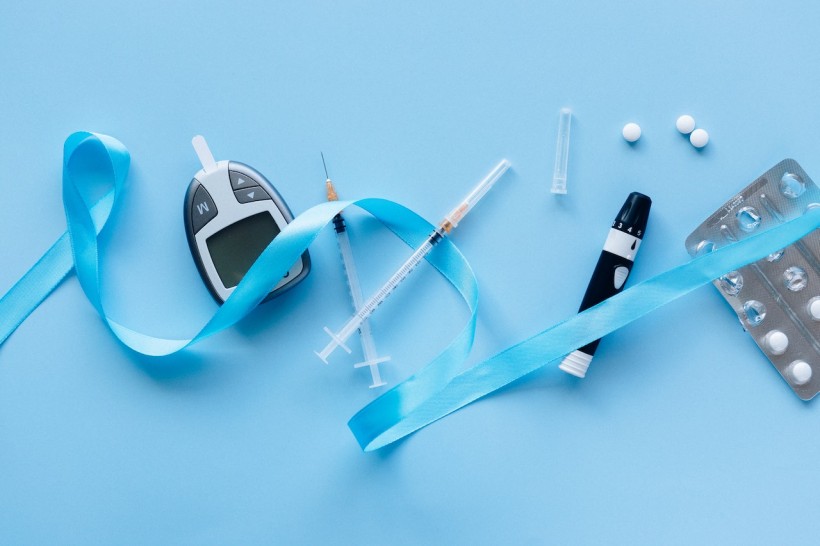Type 2 diabetes is the most common type of diabetes. It is the impairment of the body's ability to regulate blood glucose levels. This happens when excessive sugar circulates your bloodstream, which eventually results in disorders of the nervous, circulatory, and immune systems.
In type 2 diabetes, your pancreas doesn't produce enough insulin, a hormone primarily responsible for regulating the movement of sugar in the cells.
Your doctor diagnoses diabetes if your blood sugar levels are 126 mg/dl after fasting for eight hours. According to the US Centers for Disease Control & Prevention, over 30 million Americans have diabetes.
About 90 percent of these cases have type 2 diabetes. Therefore, you need to recognize the early signs and symptoms of type 2 diabetes.
Symptoms of Type 2 Diabetes
Type 2 diabetes symptoms appear gradually. Therefore, the affected person may not notice the symptoms in the early stages as these symptoms slowly develop over time.
You may have type 2 diabetes for a long time before even figuring it out. Here are the gradual symptoms you should look out for.
-
Increased hunger and thirst
-
Frequent urination
-
Unintended weight loss
-
Blurred vision
-
Slow healing of wounds and sores
-
Fatigue
-
Numbness in hands and feet
-
Tingling sensation in the limbs
-
Frequent infections
-
Skin pigmentation or dark spots on the neck and armpits
Type 2 diabetes can cause severe complications. Therefore you should look out for these symptoms and consult a doctor to manage your blood sugar levels.
Early Signs of Type 2 Diabetes
Most people affected by type 2 diabetes do not experience symptoms in the early stages. Some people may not have any symptoms for years.
One of the early signs of diabetes is darkened skin. This is called acanthosis nigricans. Some other early signs of type 2 diabetes include the following.
-
Darkened elbows and neck
-
Pigmentation on the knees
-
Discoloration of knuckles
-
Frequent kidney, skin, and bladder infections
-
Frequent urination
-
Delayed cut and wound healing
A person may experience mild symptoms for years. Eventually, they become more noticeable.
Unchecked high blood glucose levels can also cause serious complications such as various disorders. Therefore you must look into the early signs and symptoms to prevent type 2 diabetes from causing more severe health issues.
Complications of Type 2 Diabetes
Type 2 diabetes causes numerous health complications. Some conditions are long-term and chronic.
They require immediate medical attention. Thus, you should get your blood sugar levels checked and controlled before you develop the following health complications.
Hypoglycemia & Hyperglycemia
The condition in which your blood glucose levels fall below 70 mg/dl is called hypoglycemia. Hypoglycemia can cause severe complications and even prove fatal. Risk factors associated with hypoglycemia include dementia, fractures, falls, and heart attacks.
In contrast, hyperglycemia is high blood glucose levels. When the blood sugar levels rise above 180 mg/dl, the patient is at high risk for nerve, kidney, heart, and vision problems.
Diabetic Ketoacidosis
Diabetic Ketoacidosis occurs when your body has low insulin levels. As a result, your cells do not receive sugar as a fuel for energy. In this case, the body starts to break down fat for energy.
Toxic acids such as ketones start to build up in the body and spill into the urine. This can cause coma and death.
Cardiovascular Diseases
Type 2 diabetes can cause severe complications such as diseases linked to the heart and blood vessels. These include high blood pressure, high cholesterol, heart disease, etc.
High blood sugar levels can also damage your nerves and blood vessels. Moreover, high blood pressure puts you at a higher risk for stroke.
Diabetic Neuropathy
Nerve damage, also called diabetic neuropathy, causes a tingling sensation and numbness in your limbs. It also affects the urinary tract, digestive system, and heart.
Skin Disorders
Severe complications in type 2 diabetes can cause numerous skin disorders and infections. In addition, people with type 2 diabetes are at a higher risk of getting fungal and bacterial infections.
Skin infections, dryness, and flakiness also cause itching. Some severe complications include acanthosis nigricans, in which skin patches appear darker.
Other skin disorders caused by diabetes type 2 include necrobiosis lipoidica diabeticorum, which affects your blood vessels.
The skin forms a dull, raised area which creates a shiny scar. The skin itches or cracks open, causing more severe skin infections.
Diabetic blisters may also form. These are sores that resemble burn blisters. They form at the back of your fingers, toes, hands, and feet.
Other Complications
Some other complications include eye damage, kidney diseases, and hearing problems. In addition, type 2 diabetes can cause glaucoma and cataracts.
Glaucoma builds up excessive pressure in your eyes, while cataract is a cloudiness of the lens.
Bottomline
Currently, there isn't a cure for type 2 diabetes. However, people with the condition can lead a healthy life by managing their blood sugar levels.
Early diagnosis can reverse the progress of diabetes. Therefore you should look out for the signs and symptoms to immediately consult a healthcare professional.
* This is a contributed article and this content does not necessarily represent the views of sciencetimes.com















